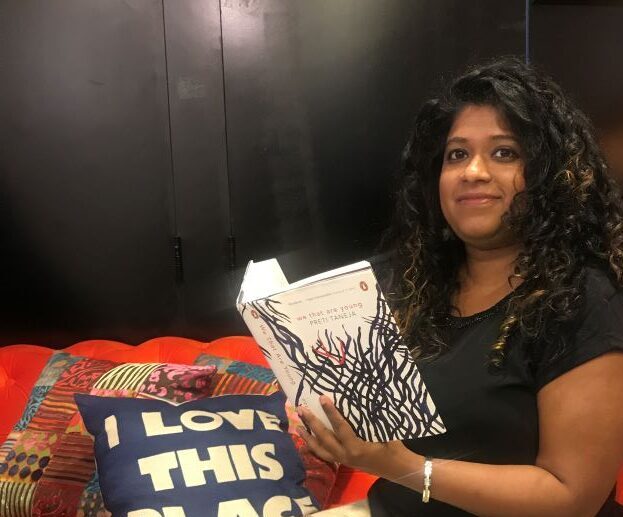We are already in June, how many of your new resolutions are still going strong? How long did they last? Be it getting fit or reading more, creating a habit is hard admittedly. But if you have heard of Atomic Habits by James Clear, you know there is a way.
Have you read Atomic habits by James Clear, earlier? Do self help books work for you? What are your other favorite self help books? Let us talk. Share on XAbout the book
And to help you quickly reach there, I am summarizing this amazing book Atomic Habits by James Clear.

Book Name: Atomic habits: Tiny Changes, Remarkable Results, An Easy & Proven Way to Build Good Habits & Break Bad Ones
Author: James Clear
Genre: Fiction – Non Fiction, self-help
Atomic Habits Part 2 (you are here)
- 8 How to Make a Habit Irresistible
- 9 The Role of Family and Friends in Shaping Your Habits
- 10 How to Find and Fix the Causes of Your Bad Habits
- 11 Walk Slowly, but Never Backward
- 12 The Law of Least Effort
- 13 How to Stop Procrastinating by Using the Two-Minute Rule
- 14 How to Make Good Habits Inevitable and Bad Habits Impossible
Free bonus: Download the 3 part summary of Atomic Habits as a PDF. Easily save it on your computer for quick reference or print it and keep at your desk.
Disclaimer
This is just a book summary of Atomic Habits by James Clear to help other people who would not be able to read the entire book by themselves. These lines are taken from James’ book for academic purposes only. I am not posing as it is my work or my ideas. The copyrights rights are with the author only.
THE 2ND LAW Make It Attractive
8 How to Make a Habit Irresistible
- The brain of each animal is preloaded with certain rules for behavior, and when it comes across an exaggerated version of that rule, it lights up like a Christmas tree.
- Scientists refer to these exaggerated cues as supernormal stimuli
- The more attractive an opportunity is, the more likely it is to become habit-forming.
- daydreaming about an upcoming vacation can be more enjoyable than actually being on vacation.
- Dopamine surges during anticipation, not achieving the result.
- You can link an action you want to do with an action you need to do.
- After [CURRENT HABIT], I will [HABIT I NEED]. After [HABIT I NEED], I will [HABIT I WANT].
- After I get my morning coffee, I will say one thing I’m grateful for that happened yesterday (need).
- After I say one thing I’m grateful for, I will read the news (want)
9 The Role of Family and Friends in Shaping Your Habits
- We don’t choose our earliest habits, we imitate them. – Group behavior/herd mentality.
- We copy habits from 3 different groups.
- The close
- The many
- The powerful
- Imitating the close
- the closer we are to someone, the more likely we are to imitate some of their habits.
- a person’s chances of becoming obese increased by 57 percent if he or she had a friend who became obese.
- higher your best friend’s IQ at age eleven or twelve, the higher your IQ would be at age fifteen,
- Join a culture where
- (1) your desired behavior is the normal behavior and
- (2) you already have something in common with the group.
- shared identity begins to reinforce your personal identity.
- I am a reader –> We are readers
- Remaining part of a group after achieving a goal is crucial to maintaining your habits.
- Imitating the Many
- There is tremendous internal pressure to comply with the norms of the group.
- we’d rather be wrong with the crowd than be right by ourselves.
- There is tremendous internal pressure to comply with the norms of the group.
- Imitating the Powerful
- We want to be acknowledged, recognized, and praised.
- Once we fit in, we start looking for ways to stand out.
- If a behavior can get us approval, respect, and praise, we find it attractive.
10 How to Find and Fix the Causes of Your Bad Habits
- Make bad habits unattractive .
- You see a cue, categorize it based on past experience, and determine the appropriate response.
- Not reactive but predictive
- You see a cue, categorize it based on past experience, and determine the appropriate response.
- Reframing your habits to highlight their benefits rather than their drawbacks to make a habit seem more attractive.
- “I need to go run in the morning,”
- “ It’s time to build endurance and get fast.”
- “I am nervous”
- I am excited and I’m getting an adrenaline rush to help me concentrate.”
- “I need to go run in the morning,”

THE 3RD LAW Make It Easy
11 Walk Slowly, but Never Backward
- “The best is the enemy of the good.” – Voltaire
- If you want to master a habit, the key is to start with repetition, not perfection.
- You don’t need to map out every feature of a new habit. You just need to practice it.
- Quality vs Quantity experience
- Motion vs Action
- If I search for a better diet plan and read a few books on the topic, that’s motion.
- If I actually eat a healthy meal, that’s action.
- If I outline twenty ideas for articles I want to write, that’s motion.
- If I actually sit down and write an article, that’s action.
- Motion is useful, but it will never produce an outcome by itself.
- Talking to a trainer has no use, unless you start working out.
- Sometimes we need plans to start working.
- Mostly we do it because motion allows us to feel like we’re making progress without running the risk of failure.
- you want to delay failure.
- Motions you feel like you’re getting things done, but you are just getting prepared to do things.
- If I search for a better diet plan and read a few books on the topic, that’s motion.
- It is why the students who took tons of photos improved their skills while those who merely theorized about perfect photos did not.
- One group engaged in active practice, the other in passive learning.
- The amount of time you have been performing a habit is not as important as the number of times you have performed it.
- 21 days vs 1 time for 21 days
12 The Law of Least Effort
- The difference in shape between continents played a significant role in the spread of agriculture over the centuries.
- When agriculture began to spread around the globe, farmers had an easier time expanding along east-west routes than along north-south ones.
- This is because locations along the same latitude generally share similar climates, amounts of sunlight and rainfall, and changes in season. These factors allowed farmers in Europe and Asia to domesticate a few crops and grow them along the entire stretch of land from France to China.
- agriculture spread two to three times faster across Asia and Europe than it did up and down the Americas.
- The more energy required, the less likely it is to occur.
- scrolling on our phones, checking email, and watching television steal so much of our time because they can be performed almost without effort.
- The less friction you face, the easier it is for your stronger self to emerge.
- We try to write a book in a chaotic household.
- We try to concentrate while using a smartphone filled with distractions.
- Lean production in Japanese car systems
- Reduce the friction associated with good behaviors.
- When friction is low, habits are easy.
- Want to draw more? Put your pencils, pens, notebooks, within easy reach.
- Increase the friction associated with bad behaviors.
- When friction is high, habits are difficult.
- I leave my phone in a different room until lunch.
- Prime The Environment For Future Use
- Resetting the environment – cleaning strategy and getting ready for next action
- Putting things back to place
13 How to Stop Procrastinating by Using the Two-Minute Rule
- Decisive moments
- The moment you decide between ordering takeout or cooking dinner.
- The moment you decide between starting your homework or grabbing the video game controller.
- “When you start a new habit, it should take less than two minutes to do.
- Instead of trying to engineer a perfect habit from the start, do the easy thing on a more consistent basis.
- A new habit should not feel like a challenge.
- The secret is to always stay below the point where it feels like work.
- Standardize before you optimize.
14 How to Make Good Habits Inevitable and Bad Habits Impossible
- Success is less about making good habits easy and more about making bad habits hard.
- To automate good habits and eliminate bad ones.
Other parts of the summary of Atomic habits
This is a three part summary of the book Atomic Habits by James Clear. Catch up with the other parts here!
- Atomic Habits Part 1
- Atomic Habits Part 2 (you are here)
- Atomic Habits Part 3
Free bonus: Download the 3 part summary of Atomic Habits as a PDF. Easily save it on your computer for quick reference or print it and keep at your desk.
Pin me!

Let’s talk
Have you tried other self help books or Atomic habits by James Clear, earlier? Do they work for you? What are your other favorite self help books? Let us talk.


This looks interesting. I actually don’t read self-help books but I’m now planning to, and have just added a few on my Goodreads tbr.
Oh I think it is a phase. If it works, it works.
Discussions on habits are always interesting.
I totally agree!
Not sure this would be a book for me. Looks complicated. Great analysis.
Ha ha. It was complicated.
But shucks, I also enjoy many of my bad habits 😉
You are a gem, DJ.
I love that tip – walk slowly but never backwards.
Yes I do too.
This seems like a very interesting book.
I am glad you enjoyed it.